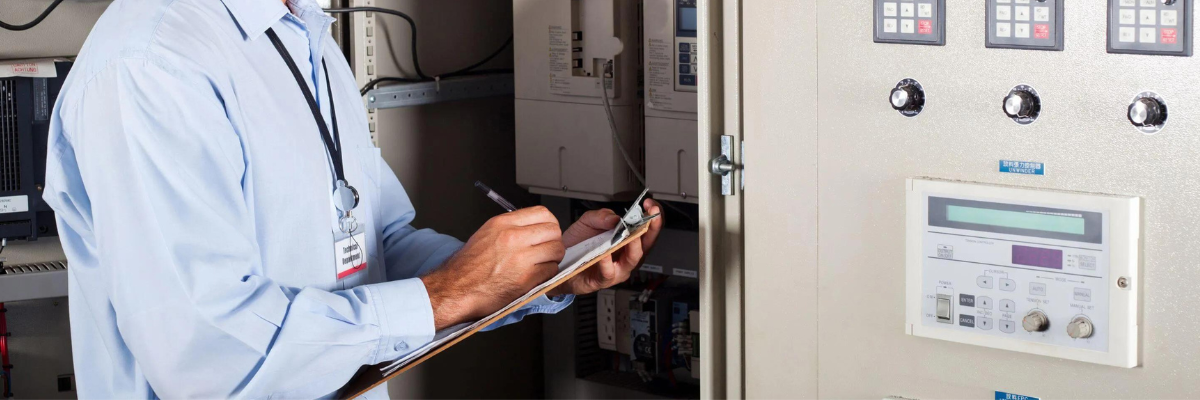An energy audit is a systematic process that evaluates how energy is being used in a facility, identifies inefficiencies, and suggests improvements to reduce energy consumption and costs. The audit involves a detailed analysis of the energy systems (heating, cooling, lighting, equipment) and recommends energy conservation measures (ECMs).
Here’s a step-by-step guide to performing an energy audit:
1. Pre-Audit Preparation
- Data Collection: The auditor collects relevant data on the facility, including:
- Utility Bills: At least 12-24 months of electricity, water, and gas bills to understand consumption patterns.
- Building Plans: Architectural and mechanical plans to identify building structure, insulation, and layout of systems.
- Operating Hours: Knowing the operational schedule helps assess energy use during peak and non-peak hours.
- List of Equipment: A detailed list of all energy-consuming equipment (HVAC systems, lighting, machinery, computers) and their specifications.
- Establish Goals: The auditor and facility owner discuss goals, such as reducing energy costs, improving efficiency, and ensuring compliance with regulations.
2. Walkthrough Audit
- On-Site Inspection: The auditor performs a site inspection to visually assess the building’s energy-consuming systems. This involves:
- Lighting: Inspecting the types of lighting used (LEDs, fluorescents, etc.) and control systems (manual or automated).
- Heating, Ventilation, and Air Conditioning (HVAC): Reviewing HVAC system efficiency, insulation, filters, and thermostats.
- Building Envelope: Checking for insulation, air leaks, and quality of windows and doors to determine heat loss or gain.
- Electrical Systems: Reviewing wiring, transformers, motors, and generators for efficiency and potential improvements.
- Production Machinery: In industrial setups, the audit includes reviewing manufacturing machinery, compressed air systems, boilers, and other energy-intensive equipment.
- Occupant Behavior: Observing how employees or residents use energy (e.g., whether lights and equipment are left on when not in use).
3. Data Analysis
- Energy Load Profile: The auditor creates a load profile by breaking down the facility’s energy use by system (lighting, HVAC, machinery) and identifying peak usage times.
- Energy Performance Indicators (EPIs): Using benchmarks and industry standards, the auditor calculates key metrics, such as:
- Energy Use Intensity (EUI): Total energy consumption per square foot of building area.
- Power Factor: Efficiency of electricity usage.
- Load Factor: The ratio of average load to maximum demand.
- Baseline Consumption: The auditor establishes the baseline energy consumption, comparing current energy use to ideal or efficient levels.
4. Identify Energy Conservation Measures (ECMs)
- Low-Cost/No-Cost Measures: Simple, cost-effective improvements such as:
- Installing LED bulbs and occupancy sensors.
- Adjusting thermostat settings.
- Fixing air leaks and improving building insulation.
- Medium-Cost Measures: Moderate investments like:
- Replacing outdated HVAC systems with energy-efficient models.
- Installing programmable thermostats and advanced lighting controls.
- Upgrading motors, compressors, and pumps to more efficient versions.
- Long-Term Capital Investments: High-cost measures that require substantial investment but offer long-term savings, such as:
- Installing renewable energy systems like solar panels or wind turbines.
- Building automation systems (BAS) for automated control of energy-consuming systems.
- Retrofitting entire production lines with energy-efficient machinery in industrial setups.
5. Cost-Benefit Analysis
- Energy Savings Estimation: The auditor estimates the energy savings for each recommended measure, based on usage patterns, equipment efficiency, and the expected reduction in energy consumption.
- Payback Period: Calculating the payback period for each measure, i.e., the time it will take for the energy savings to offset the initial cost of implementing the ECM.
- Return on Investment (ROI): Assessing the long-term financial return from implementing energy-saving technologies.
6. Report Generation
- The auditor compiles a detailed report that includes:
- Summary of Current Energy Use: Overview of energy consumption and inefficiencies identified.
- List of Recommended ECMs: Including descriptions, expected savings, costs, and payback periods for each measure.
- Energy-Saving Action Plan: A prioritized roadmap for implementing the measures, with timelines and responsibilities outlined.
- Cost Analysis and Financial Projections: Expected financial savings, ROI, and other financial projections over a 5–10-year period.
7. Implementation
- Implementation of ECMs: Once the audit report is approved, the recommended measures are implemented. Depending on the facility, this could involve installing energy-efficient equipment, modifying processes, or improving insulation.
- Training and Behavior Change: Employees or building occupants may need training on energy-efficient practices (e.g., turning off equipment when not in use).
8. Monitoring and Verification
- Post-Implementation Monitoring: Regular monitoring is essential to ensure that energy savings are realized. This involves tracking energy consumption data after ECMs have been implemented.
- Energy Management System (EMS): In some cases, companies may adopt an EMS to continuously monitor energy use, manage energy costs, and maintain efficiency over time.
Types of Energy Audits:
- Preliminary/Walkthrough Audit:
- A quick overview to identify immediate opportunities for energy savings with low investment costs.
- General Energy Audit (Detailed Audit):
- A comprehensive audit covering detailed data collection, thorough analysis, and multiple ECM recommendations.
- Investment-Grade Audit (IGA):
- A highly detailed audit with rigorous financial analysis, typically used when companies are seeking funding or making large-scale investments in energy efficiency.


Recent Comments